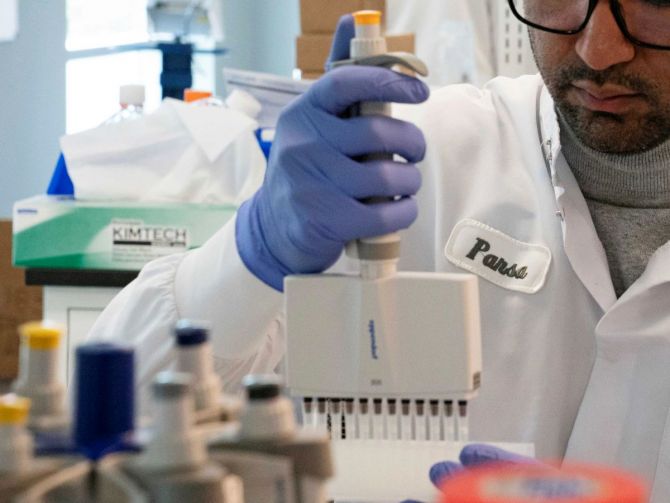 | « Back to article | Print this article |
The Oxford University COVID-19 vaccine undergoing Phase III clinical trials with British pharma giant AstraZeneca is doing 'everything expected' which means good news in the fight against the deadly virus, an independent analysis said on Thursday.

A team at Bristol University used recently developed techniques to validate that the vaccine accurately follows the genetic instructions programmed into it by the Oxford University team.
The experts say that the novel analysis provides even greater clarity and detail about how the vaccine successfully provokes a strong immune response.
"This is an important study as we are able to confirm that the genetic instructions underpinning this vaccine, which is being developed as fast as safely possible, are correctly followed when they get into a human cell," said Dr David Matthews, Reader in Virology from Bristol's School of Cellular and Molecular Medicine (CMM), who led the research.
"Until now, the technology hasn't been able to provide answers with such clarity, but we now know the vaccine is doing everything we expected and that is only good news in our fight against the illness," he said.
The vaccine, ChAdOx1 nCoV-19 and also known as AZD1222, is considered among the most advanced in the worldwide hunt for a viable vaccine against the novel coronavirus.
The findings, published on the pre-print server ResearchSquare, represent the most in-depth analysis of any of the COVID-19 vaccine candidates, going significantly above and beyond any regulatory requirements anywhere in the world.
"This is a wonderful example of cross-disciplinary collaboration, using new technology to examine exactly what the vaccine does when it gets inside a human cell," said Sarah Gilbert, Professor of Vaccinology at the University of Oxford and lead on the Oxford vaccine trial.
"The study confirms that large amounts of the coronavirus spike protein are produced with great accuracy, and this goes a long way to explaining the success of the vaccine in inducing a strong immune response," she said.
Work on the vaccine, developed by researchers at the University of Oxford's Jenner Institute and Oxford Vaccine Group, began in January this year.
Now undergoing Phase III clinical trials by the University of Oxford and biopharma giant AstraZeneca, the Bristol researchers' focus was to assess how often and how accurately the vaccine is copying and using the genetic instructions provided by the Oxford team.
These instructions detail how to make the spike protein from the coronavirus, SARS-CoV-2 that causes COVID-19.
The Oxford vaccine is made by taking a common cold virus (adenovirus) from chimpanzees and deleting about 20 per cent of the virus's instructions.
This means it is impossible for the vaccine to replicate or cause disease in humans, but it can still be produced in the laboratory under special conditions.
By removing these genetic instructions there is space to add the instructions for the spike protein from SARS-CoV-2.
Once inside a human cell the genetic instructions for the spike protein need to be 'photocopied' many times, a process known as 'transcription'.
In any vaccine system, it is these so-called photocopies that are directly used to make large amounts of the spike protein.
Once the spike protein is made, the immune system will react to it and this pre-trains the immune system to identify a real COVID-19 infection.
So, when the person vaccinated is confronted with the SARS-CoV-2 virus their immune system is pre-trained and ready to attack it.
Oxford University said that adenoviruses have been used for many years to make vaccines, and these are always tested to very high standards to make sure every batch of vaccine has the correct copy of genetic instructions embedded in the vaccine.
'However, thanks to very recent advances in genetic sequencing and protein analysis technology, researchers at Bristol were for the first time also able to directly check thousands and thousands of the 'photocopied' instructions produced by the Oxford vaccine within a cell. In this way they were able to directly validate that the instructions are copied correctly and accurately, providing greater assurance that the vaccine is performing exactly as programmed,' the university explained.
At the same time, the researchers checked the spike protein being made by the vaccine inside human cells also accurately reflects the instructions as programmed.
This brand-new approach may be more routinely used in the future to help researchers finetune the performance of these kinds of vaccines.
The study was funded by the Biotechnology and Biological Sciences Research Council (BBSRC), the United States Food and Drug Administration (US FDA) and the Engineering and Physical Sciences Research Council (EPSRC).